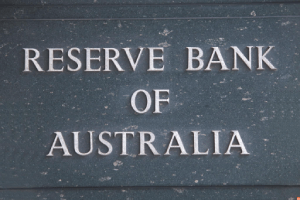Reserve Bank of Australia: Anchoring Australia’s Financial System

The Reserve Bank of Australia (RBA) serves as the central bank of Australia and plays a pivotal role in the country’s economic stability and financial system. Commonly referred to as RBA, it is an independent institution responsible for formulating and implementing monetary policy, regulating the financial sector, and ensuring the stability of the Australian dollar.
History and Establishment
The Reserve Bank of Australia was established in 1960 through the Reserve Bank Act, which granted it legal authority and autonomy in executing its functions. Prior to its establishment, the Commonwealth Bank of Australia had performed central banking functions since 1911. However, the need for a dedicated central bank led to the creation of the RBA.
Monetary Policy and Interest Rates
One of the key responsibilities of the RBA is the formulation and execution of Australia’s monetary policy. The RBA’s primary objective is to achieve price stability, which is pursued through its inflation targeting framework. By maintaining inflation within a target range, typically between 2% and 3%, the RBA aims to foster a stable and predictable economic environment.
To achieve its inflation target, the RBA utilizes its control over interest rates. It sets the cash rate, which influences borrowing costs and, consequently, consumer spending, business investment, and overall economic growth. Adjustments to the cash rate are made based on prevailing economic conditions, both domestic and global.
Role in Financial Stability
Beyond monetary policy, the RBA plays a crucial role in ensuring the stability of the Australian financial system. It oversees and regulates financial institutions, including banks, to maintain their soundness and protect the interests of depositors and consumers. Additionally, the RBA collaborates with other regulatory bodies, such as the Australian Prudential Regulation Authority (APRA) and the Australian Securities and Investments Commission (ASIC), to achieve comprehensive financial supervision.
Australian Economy and RBA’s Impact
The RBA’s decisions significantly impact the Australian economy. Its monetary policy actions influence consumer and business confidence, investment decisions, and overall economic activity. By adjusting interest rates, the RBA can stimulate economic growth during periods of sluggishness or rein in inflationary pressures during economic booms.
Australian Dollar Exchange Rate
As the issuer of the Australian dollar, the RBA actively participates in the foreign exchange market to manage the currency’s value. While the Australian dollar’s exchange rate is generally determined by market forces, the RBA may intervene to mitigate excessive volatility or address economic challenges associated with exchange rate fluctuations.
Governor and Board Members
The RBA is governed by a board consisting of its Governor and Deputy Governor, as well as several non-executive members appointed by the government. The Governor is the chief executive officer of the RBA and holds a significant role in shaping the country’s monetary policy.
RBA’s Transparency: Reports and Statements
The RBA maintains a transparent approach to its activities, providing regular public releases of monetary policy statements, financial stability reports, and speeches by key officials. These publications offer insights into the RBA’s assessments of the economy, its policy outlook, and the factors influencing its decisions.
Conclusion
The Reserve Bank of Australia remains a cornerstone of Australia’s financial system, entrusted with the critical task of maintaining price stability and economic prosperity. Through its effective monetary policy, vigilant regulation, and commitment to financial stability, the RBA continues to contribute to the nation’s economic well-being and financial resilience.

































Leave your commentary